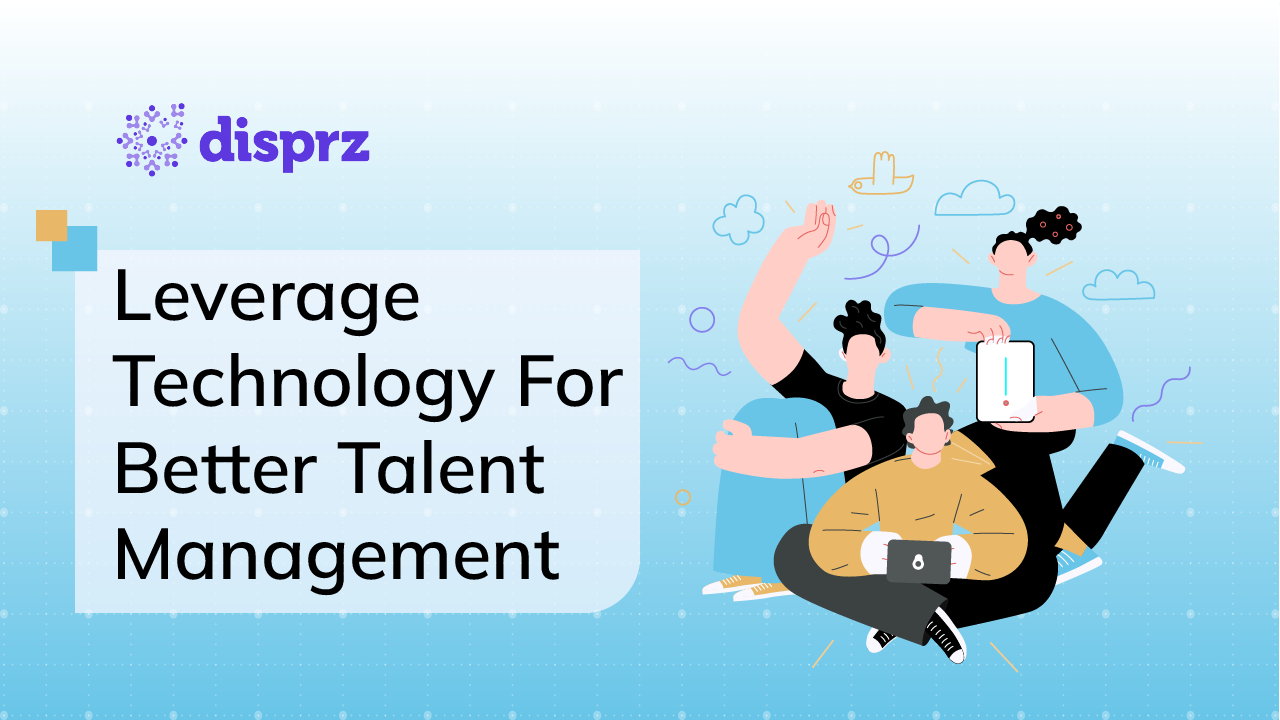Over time, talent management has been a challenge that organizations have wrestled with, significantly impacting their competitiveness and employee satisfaction. To understand this issue better, let's start with a talent management definition: it's the strategic process of attracting, developing, and retaining skilled employees to meet organizational goals.
McKinsey recently revealed in a study that 87% of CEOs are facing or anticipating skills gaps within their organizations. This issue is critical and requires organizations to effectively upskill, manage, and monitor their employees. Hence, talent management plays a pivotal role in the overall success of an organization.
What is the fundamental problem with this challenge — managing talent effectively? Is it the ongoing struggle to identify skills gaps or the complex task of aligning individual talents with job requirements? The list continues. This blog will explore 4 key challenges that organizations using traditional talent management practices face. We will also discuss potential solutions to tackle them head-on, including integrated talent management approaches.
Significance of Efficient Talent Management in Today's Workplace
An organization strategically invests in its greatest asset - its people - through talent management. The objectives of talent management primarily involve recruiting skilled individuals, fostering continuous learning, rewarding high performers, and promoting internal advancement. Understanding what talent management is and its role in human resource management (HRM) is crucial for organizational success.
Every organization finds it crucial for the following reasons:
Recruit right
The organization recruits and onboards individuals with the right skills, qualifications, and cultural fit for talent management. Effective recruitment and selection contribute to building a diverse and high-performing team. This is a key process of talent management that falls under talent acquisition.
Develop the employee's better
Talent management focuses on developing employees through training, mentorship, and career advancement opportunities. Investing in employees' upskilling improves their work and also makes them more loyal and committed to the organization as a whole.
In organizations characterized by rapid technological advancements and evolving market trends, this emphasis on development is vital.
Retain top talent
Another critical aspect of talent management is retaining top talent. Costly and disruptive consequences can arise from high employee turnover. Organizations that prioritize employee satisfaction, work-life balance, and recognition are more likely to retain their key performers.
To attract and retain employees, organizations need to create a positive and welcoming work environment. Happy employees are more likely to stay with their employer for a long time, which is a key objective of talent management.
Better succession planning
Talent management also plays a pivotal role in succession planning. Finding and training high-performing employees for leadership roles is important. This will ensure a smooth shift when key employees leave or retire. Thus, organizations can reduce the risk of leadership gaps through proactive succession planning.
By finding, developing, and keeping top employees, organizations can build a skilled and driven team. This team can handle change, lead innovation, and achieve long-term success.
Why Do Organizations Struggle with Talent Management?
Here are the major pain points in talent management across various industries, highlighting the consequences of failure in managing talent effectively:
Difficulty in Identifying and Assessing Skills Gaps
One of the biggest problems in talent management is that it's hard to find and evaluate skill gaps in the organization as a whole. There aren't any standard ways for HR teams to evaluate skills, so it's hard for them to understand the current skill set.
If organizations are unaware of this, it can be hard for them to ensure their employee development programs match with changing business needs. This can hurt their ability to be competitive and flexible.
Standardized skills measurement tools can help firms get real-time information about the skills of their employees. HR teams can proactively address skills gaps and align training initiatives with strategic business objectives.
Inability to Track Skills Development Over Time
Traditional talent management often only looks at how employees learn, ignoring the important part, which is keeping track of their skill growth over time.
According to a study by McKinsey, only 30% of corporate learning is successful. This shows how important it is to track real, business-related results from learning and development programs.
Investing in rigorous measuring and progress monitoring tools can enable organizations to track employees' skill development over time.
With this data-driven method, it's easier to get a better idea of how training programs are working. This helps organizations get the most out of their investments in learning and development.
Lack of a Common Language for Discussing Skills
The absence of a uniform language for describing abilities in traditional talent management creates communication gaps between HR experts, employees, and management.
This linguistic barrier hampers successful skill-related discussions, obstructing the alignment of talent strategies with organizational objectives.
As per a Deloitte survey, only 10% of HR executives possess a well-defined skills taxonomy or framework. These scary stats show that there isn't a standard repository for skills. This makes it hard for HR teams to find skill gaps and strengths. And in turn, it becomes harder to make the best decisions about where to put talent and how to grow them.
Establishing a standardized skills taxonomy or framework can bridge the communication gap and facilitate more effective discussions around skills. Therefore, HR teams should work on creating a common language. This will help identify and capitalize on employees' strengths, which will help talent allocation and development programs work better.
Difficulty in Matching Skills with Job Requirements
Traditional talent management has hassle matching skills of individuals with job needs. This can lead to mismatches that make employees less satisfied with their jobs and less productive.
The World Economic Forum's 2023 Future of Jobs report says that over 70 million new jobs will be created globally by 2023. And by 2027, there will be a loss of 83 million jobs. This means that companies will need to be able to adapt quickly and efficiently to the changing needs of the workplace.
By using a skills-based method of talent management, organizations can help job seekers find roles that match their skills. This not only boosts job satisfaction and productivity but also positions companies to navigate the dynamic job market effectively.
Benefits of Using Technology for Talent Development in 2025
Many L&D professionals realize the importance of technology in shaping their workforce with the right skills. Even the industry’s leading consumer experience platform, True Fit’s CHRO Kenneth W Wheeler, vouches for the impact of technology in talent management. Kenneth validates the role of technology in shaping a skilled workforce that is capable of driving success.
In his recent interview with Disprz, he shared insights on how True Fit leverages technology to create the right skilled workforce:
Identify Skill Gaps
It helps you quickly identify & address any skills gaps within your organization. Through online assessments, feedback tools, or learning management systems, technology can help you get a clear picture of where your employees need to improve and how you can help them get there. This is a crucial aspect of the talent management process.
Personalized Learning
It can make learning more personalized and effective. Gone are the days of one-size-fits-all training programs. With technology, you can tailor learning experiences to the specific needs and goals of your employees. You can even use AI and machine learning to create customized learning paths based on an employee’s progress & performance.
Accessibility
It makes learning more accessible and convenient. It’s important to have learning solutions that employees can access from anywhere, at any time. Online learning platforms and mobile apps make it easy for employees to learn on the go, at their own pace.
Track Progress
It helps you measure the effectiveness of your learning initiatives. With data and analytics tools, you can track employee progress, engagement, and satisfaction with your learning programs. This can help you identify what’s working and what’s not, and make adjustments accordingly.
5 Tips to Overcome Talent Management Challenges 2025
Organizations need to implement the following five key tips and strategies to overcome talent management challenges in 2025. These talent management best practices form a comprehensive talent management model:

Tip - 1 Smart hiring strategies involve conducting thorough job analyses to align with organizational goals, utilizing targeted job postings, diverse sourcing channels, and customized interview processes, while fostering values alignment, transparency, and employee involvement in decision-making. This forms the foundation of an effective talent management framework.
Tip - 2 Experience with technology involves utilizing applicant tracking systems for efficient candidate screening and interview scheduling, facilitating online training modules and virtual orientations for onboarding, and enabling real-time feedback and personalized development plans for performance management. This is where talent management software and workforce analytics play a crucial role.
Tip - 3 Effective leadership involves identifying high-potential employees, providing challenging assignments, and offering mentorship opportunities. For employee retention, leaders prioritize open communication, recognize achievements, and promptly address concerns. Professional development efforts include leadership training, skill-building workshops, and career advancement opportunities.
Tip - 4 To reduce turnover, offer attractive compensation through market analyses, performance-based bonuses, and comprehensive benefits. Engagement initiatives foster belonging with team-building, public recognition, and regular feedback. Fostering a learning culture involves continuous learning opportunities, skill development, and knowledge sharing.
Tip - 5 Promoting diversity includes creating an inclusive culture, providing diversity training, and supporting underrepresented employees' growth. These strategies collectively enhance talent management, ensuring organizations attract and retain top talent and thrive in the business landscape.
Way Forward
Talent management is still hard for many organizations, even though it's clear how important it is. Finding skills gaps is always hard, and matching people's skills to their specific job needs is even harder. The journey is still long and difficult.
It's important to recognize how important it is to manage talent well. This is because it's not just about the organization's plan; it's also about fixing a problem right now.
To do well in today's business world, organizations can become more competitive by managing their employees better. One way to do this is to use an advanced AI-driven LXP to assess skills. The platform will help keep an eye on skill growth, develop a common language for skills, and hire the right people based on their skills.
Book a demo to tackle these key challenges in talent management and implement an integrated talent management approach that addresses the entire talent lifecycle









